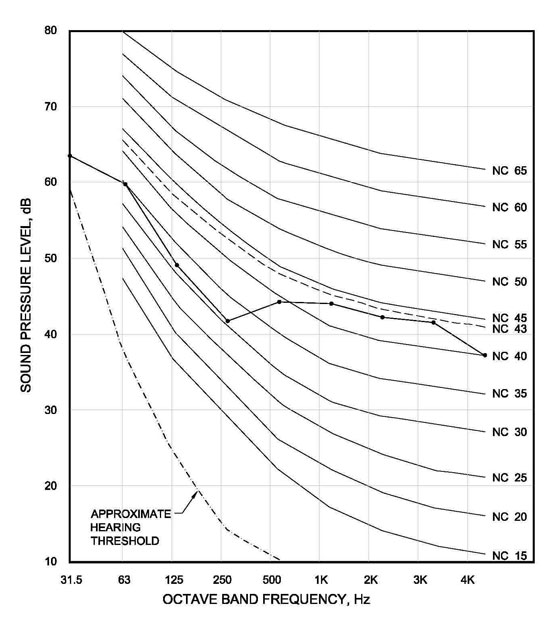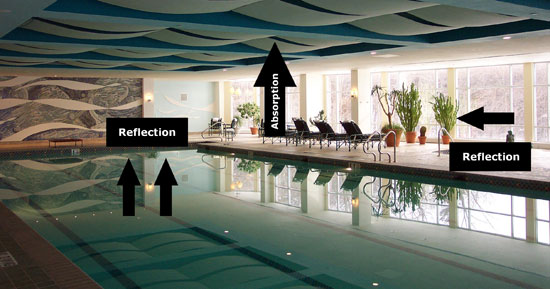Noise Control and Room Acoustics in Building Design
Sound wave length.
High frequency sounds have a shorter wave length. A 2000 Hz sound, for example, has a 7-in. wavelength. Low frequency sounds have a longer wavelength; a 125 Hz (low frequency), for example, has a 9-ft wavelength.
Low frequency (longer) sound waves are difficult to control with standard building materials.
 |
Noise Criteria establishes background noise across various frequencies Provided by Kinetics Noise Control |
Noise criteria (NC)
NC curves establish the desirable background sound levels. Because higher frequencies are heard as louder than lower frequencies of the same dB level, NC curves allow higher dB levels at lower and lower frequencies.
Established in the U.S., NC rates indoor noise for various spaces. NC is a single numerical index commonly used to define design goals for the maximum allowable background noise in a given space. They primarily apply to the noise produced by a ventilation system, but they may be applied to other noise sources. The NC criteria consist of a family of curves that define the maximum allowable octave-band sound pressure level corresponding to a chosen NC design goal. As an example, a private office space would require a lower NC rating than a lobby area.
 |
Sound reflects off hard surfaces and is absorbed by softer surfaces. Photo provided by Kinetics Noise Control |









